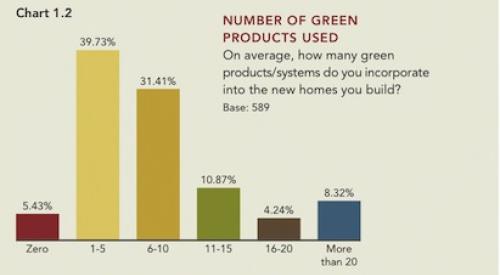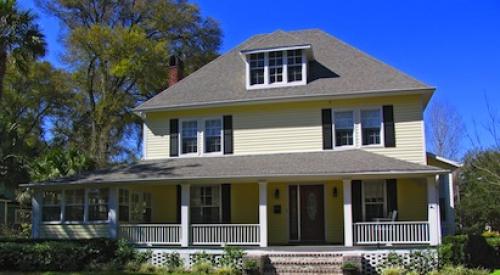Most of the housing markets in the country are slowing because interest rate increases have affected all markets. Some level of speculative investor activity existed almost everywhere as well. This month, we will examine two of the largest housing markets in the country that have not received a lot of attention: the metropolitan areas of Minneapolis and Lakeland, Fla.
Giant Market: The Twin CitiesThe Minneapolis-St. Paul metro area economy is roaring, with 48,000 jobs created over the last year, which is a 2.7 percent growth rate. Approximately 25 percent of the jobs created were in the high-paying professional and business services sector, and the unemployment rate is only 3.5 percent. The 13-county metropolitan area is home to nearly 3 million residents and many Fortune 500 companies. Target, PepsiAmericas and 3M all call Minneapolis-St. Paul home.
 Photo courtesy of MeetMinneapolis.com |
Downtown Minneapolis, built predominately in the early 1900s, is experiencing a surge in new condominium construction, with warehouses being converted into lofts. Because of the construction, it's possible the urban core population could double by 2010. Still, commuters greatly outnumber people living downtown.
The Minneapolis housing market isn't faring as well as the economy. Single-family permits have declined 17 percent compared to this time one year ago, and builders are reporting sluggish sales activity. The reason: affordability. Our Housing Cycle Barometer rating for Minneapolis is currently 6.1, making affordability in this market above both its historical median and most other Midwestern markets.
The rise in mortgage rates combined with rising listings has converted this seller's market into a buyer's market where qualified buyers are difficult to find and have plenty of options. We suspect prices will go through an adjustment period until the number of listings returns to a healthy level.
Up and Coming Market: Lakeland, Fla.  Photo courtesy of the Central Florida Visitors & Convention Center |
Lakeland, located in Central Florida between Orlando and Tampa, is a growing market with an excellent long-term outlook. Lakeland has historically been known for its production of phosphate and citrus crops, both which make substantial contributions to the Florida economy. Over the next few decades, it will become known as the affordable housing market because of its easy access to Orlando and Tampa. Workers and retirees who find Orlando and Tampa expensive will find a home in Lakeland.
Lakeland is one of the few Florida markets that is still experiencing year-over-year growth in building permit activity, with 11,600 single family permits issued in the last 12 months (14 percent growth). Although Orlando and Tampa haven't experienced growth in the number of permits issued in the last year, by comparison, they have issued more than 50,000 single-family permits in that time.
Lakeland has not been immune to the investor activity that prevailed in Florida, so its housing market has softened recently as well. However, the Lakeland market is a great place for a building operation for decades ahead.
| Employment | Affordability | Permits | ||||||||||
| Short-Term Outlook/Grade | 1-Year Payroll Employment | 1-Year Growth Rate | Unemployment Rate | Median Resale Home Price | Resale Housing Cost as % of Income | Housing Cycle Barometer | 12-Month Single-Family Permits | 1-Year Single-Family Growth | 12-Month Total Permits | Total Permits as % of Peak Permits | ||
| 1 | Atlanta | B | 54,000 | 2.3% | 4.9% | $173,817 | 29% | 5.5 | 61,947 | 7% | 75,084 | 100.0% |
| 2 | Houston | B | 59,000 | 2.5% | 5.5% | $154,700 | 26% | 5.3 | 54,561 | 14% | 68,204 | 90.8% |
| 3 | Phoenix | B | 90,300 | 5.1% | 4.1% | $265,000 | 41% | 6.7 | 52,068 | -14% | 62,376 | 90.1% |
| 4 | Riverside-SB | D | 39,800 | 3.3% | 5.2% | $390,000 | 68% | 9.6 | 42,352 | -3% | 48,640 | 84.4% |
| 5 | Dallas | A | 52,600 | 2.7% | 5.3% | $167,700 | 27% | 5.1 | 32,051 | 4% | 40,115 | 54.3% |
| 6 | Las Vegas | B | 48,900 | 5.6% | 4.6% | $305,000 | 50% | 7.3 | 28,280 | 1% | 41,789 | 100.0% |
| 7 | Chicago | B | 44,500 | 1.2% | 4.6% | $260,000 | 43% | 7.3 | 27,562 | -4% | 46,470 | 100.0% |
| 8 | Orlando | B+ | 41,000 | 4.0% | 3.2% | $250,000 | 44% | 7.6 | 25,953 | -1% | 34,502 | 95.5% |
| 9 | Tampa | B+ | 29,000 | 2.3% | 3.4% | $203,750 | 41% | 7.3 | 24,609 | -2% | 29,186 | 76.9% |
| 10 | Charlotte | A | 22,900 | 3.0% | 4.9% | $176,000 | 29% | 5.0 | 20,889 | 19% | 24,328 | 100.0% |
| 11 | Fort Myers | C+ | 10,700 | 4.9% | 2.8% | $249,900 | 45% | 6.8 | 19,770 | -4% | 26,386 | 90.0% |
| 12 | Austin | B | 18,500 | 2.7% | 4.4% | $174,800 | 30% | 5.1 | 19,072 | 23% | 26,994 | 100.0% |
| 13 | Washington D.C. | C+ | 60,400 | 2.6% | 3.5% | $441,106 | 54% | 9.7 | 18,898 | -23% | 27,339 | 72.0% |
| 14 | Fort Worth | B | 19,200 | 2.4% | 5.3% | $117,700 | 20% | 5.2 | 18,692 | 14% | 22,561 | 58.6% |
| 15 | Denver | A | 22,900 | 1.9% | 4.8% | $250,000 | 38% | 6.0 | 16,498 | -7% | 20,846 | 73.0% |
| 16 | Jacksonville | C+ | 17,000 | 2.8% | 3.8% | $193,000 | 33% | 6.4 | 16,393 | -2% | 23,056 | 91.9% |
| 17 | San Antonio | B | 15,000 | 1.9% | 5.3% | $147,100 | 29% | 5.3 | 15,458 | 15% | 22,838 | 100.0% |
| 18 | Minneapolis | B+ | 48,000 | 2.7% | 3.5% | $246,500 | 33% | 6.1 | 15,092 | -17% | 19,942 | 70.9% |
| 19 | Nashville | A | 18,100 | 2.5% | 4.7% | $159,900 | 29% | 5.6 | 14,393 | 6% | 15,560 | 84.7% |
| 20 | Raleigh-Cary | A+ | 20,800 | 4.5% | 3.8% | $194,000 | 30% | 5.1 | 13,898 | 6% | 16,832 | 100.0% |
| 27 | Lakeland | C+ | 5,800 | 2.8% | 3.9% | $185,000 | 39% | 6.8 | 11,635 | 14% | 13,494 | 100.0% |
| * Annual Mortgage Costs + 17 of the down payment divided by income ** Proprietary affordability scale with 0 meaning most affordable time since 1983, 5 meaning median affordability, and 10 meaning least affordable time. *** Peak activity since 1985. Sources: Bureau of Labor Statistics; Census Bureau through the month ending July 2006; John Burns Real Estate Consulting Data on all markets available at www.realestateconsulting.com. | ||||||||||||
| Author Information |
| John Burns helps many of the largest companies in the industry with strategy and monitoring market conditions. He can be reached at jburns@realestateconsulting.com. |












